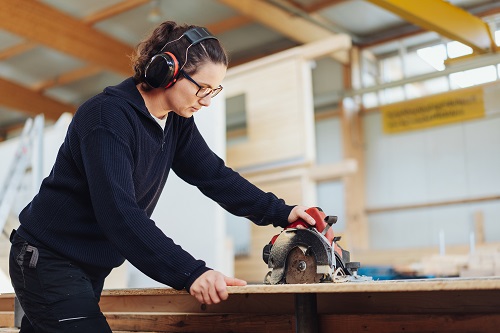Research Provides Clues to Hearing Damage From Loud Noise

Exposure to loud noise is the most common preventable cause of hearing loss. Earplugs or earmuffs can protect your hearing, but sometimes loud noises happen too quickly to prevent damage. Scientists funded by the National Institutes of Health might be on their way to finding a solution. University of Southern California professor John S. Oghalai, M.D., and colleagues studied how loud noises affect the connections between cells in your ear that detect sound and nerves that lead to your brain. They published their findings in November 2021.
Hearing is an amazing process, made possible in part by about 15,000 tiny hair cells inside your cochlea—the small, snail-shaped organ for hearing located in the inner ear. The cells are called hair cells because tiny bundles of hair-like stereocilia sit on top of each hair cell. Your inner ear contains two types of hair cells: inner hair cells and outer hair cells. The inner hair cells respond to louder sounds. The outer hair cells help you hear soft sounds.
When inner and outer hair cells detect sounds, they send signals to the brain by way of the hearing, or auditory, nerve. This communication of information from the hair cell to an auditory nerve cell occurs where the hair cell and the nerve cell meet, at a structure called a synapse. This transfer of information occurs through the release of synaptic vesicles, small chemical-filled pouches, from the hair cell. This chemical signal is taken up by the nerve cell, which then signals the brain. Synaptic vesicles accumulate in the hair cell at specialized areas called synaptic ribbons, which are located right at the hair cell-auditory nerve synapse.
Very loud sounds stimulate hair cells, but they can also cause a buildup of fluid in the inner ear that damages the hair cell synaptic ribbons, making the cells unable to communicate with the auditory nerve and causing hearing loss. (This inner-ear fluid is different from the middle-ear fluid related to ear infections.)
Using specialized equipment, scientists have shown in test models that they can inject the inner ear with a very small amount of saline (salty) solution to remove this excess inner-ear fluid. Now they wanted to know if this process of using a saline solution to reduce the excess fluid could rescue the synaptic ribbons and limit hearing damage due to loud noise.
In this study, Dr. Oghalai and colleagues divided mouse test models into two groups. One group was exposed to a series of loud blasts. The researchers studied that groups’ ears and discovered that only the loudest sound—equivalent to power tools or gunshots—increased the inner-ear fluid. Next, they counted the number of synaptic ribbons in both the inner and outer hair cells. The synaptic ribbons were only missing from the inner hair cells—the cells that detect louder sounds—and the synaptic ribbon damage did not happen instantly. In fact, once the damaging excess inner-ear fluid began to accumulate, it continued to increase hours after exposure. This led the scientists to think that treatment with the saline solution soon after the loud noise might stop some of the synaptic ribbon loss.
To test this, the scientists injected saline into only the left ear of the test models immediately after loud noise exposure. The fluid caused by noise decreased as expected in that ear and in the untreated right ear. Seven days later, they looked at the number of synaptic ribbons in each ear and found that the left ear had a higher number of preserved synaptic ribbons than the right ear, which did not receive a saline injection. This shows that in mice, reducing the excess inner-ear fluid caused by noise exposure can save some synaptic ribbons and partially prevent hearing damage due to loud noises.
This study in mice, funded by Noisy Planet’s parent organization, the National Institute on Deafness and Other Communication Disorders (NIDCD), needs to be replicated in human ears, so don’t inject saline solution into your ears after a loud concert! But this study could eventually lead to a treatment for exposure to dangerously loud sounds, preventing some of the hearing damage in people before it becomes permanent.
In the meantime, protect your hearing from loud noise by following these three simple rules:
- Move away from the sound.
- Turn down the volume.
- Wear hearing protectors, such as earplugs or protective earmuffs.
